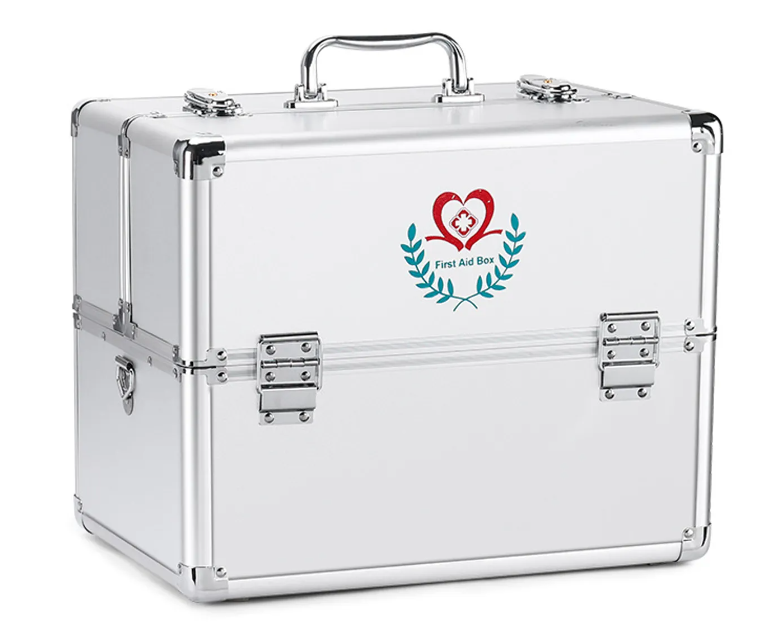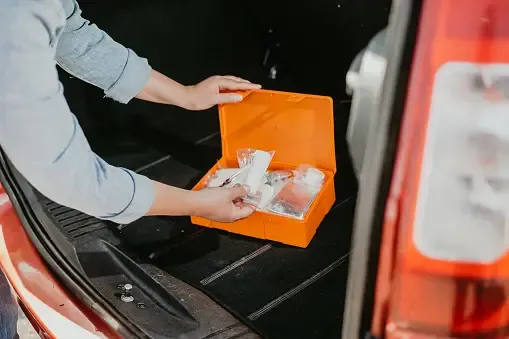
GET A QUOTE
How to Use a First Aid Box?
First aid is a crucial skill that everyone should have. Whether you are at home, in the workplace, or outdoors, knowing how to properly use a first aid box can make a significant difference in an emergency situation. In this comprehensive guide, we will explore the way to use the first aid box effectively. Our goal is to ensure that you are well-prepared to handle minor injuries and illnesses with confidence.
Understanding the Components of a First Aid Box
Basic Items Every First Aid Box Should Contain
A first aid box is an essential item in every household, workplace, and vehicle. To use it effectively, it's important to familiarize yourself with its contents. Here are the basic items every first aid box should contain:
- Adhesive Bandages: Various sizes for minor cuts and scrapes.
- Gauze Pads and Roll Gauze: For larger wounds that require more coverage.
- Antiseptic Wipes: To clean wounds and prevent infection.
- Adhesive Tape: To secure bandages and dressings.
- Scissors: For cutting tape, gauze, or clothing if necessary.
- Tweezers: For removing splinters or other foreign objects.
- Instant Cold Packs: To reduce swelling and pain.
- Disposable Gloves: To protect both the injured person and the first aider.
- CPR Face Shield: For safe mouth-to-mouth resuscitation.
- First Aid Manual: Provides instructions on handling different types of injuries.
Additional Items to Enhance Your First Aid Box
While the basic items are essential, adding a few more supplies can enhance your first aid box and prepare you for a wider range of emergencies:
- Pain Relievers: Such as aspirin, ibuprofen, or acetaminophen.
- Antihistamines: For allergic reactions.
- Hydrocortisone Cream: For itching and skin irritations.
- Burn Gel: For minor burns.
- Eyewash Solution: To rinse out foreign objects or chemicals from the eyes.
- Digital Thermometer: To check for fever.
The Way to Use the First Aid Box in Different Scenarios
Treating Minor Cuts and Scrapes
Minor cuts and scrapes are common injuries that can be easily treated with a first aid box. Here’s the way to use the first aid box for these injuries: first, clean the wound using antiseptic wipes to thoroughly remove any dirt or debris. Then, apply an appropriately sized adhesive bandage to the wound. Finally, monitor the wound for signs of infection, such as redness, swelling, or pus.
Handling Sprains and Strains
Sprains and strains can occur during physical activities. Here’s how to use the first aid box to manage these injuries: encourage the injured person to rest the affected area and avoid putting weight on it. Use an instant cold pack from the first aid box to reduce swelling, applying it for 15-20 minutes every hour. Wrap the injured area with an elastic bandage and elevate it to minimize swelling.
Managing Burns
Burns can vary in severity, and knowing how to use a first aid box for burns is essential. First, rinse the burn with cool (not cold) water for at least 10 minutes. If available, apply burn gel from the first aid box to soothe the burn. Cover the burn with a sterile gauze pad to protect it from infection.
Maintaining Your First Aid Box
Regular Checks and Replenishment
To ensure your first aid box is always ready for use, it’s important to perform regular checks and replenish any used or expired items. Conduct monthly inspections to check the contents of your first aid box, ensuring nothing is missing or expired. After using any item from the first aid box, replace it immediately. Check the expiration dates on all medications and replace them as needed.
Customizing Your First Aid Box
Depending on your specific needs and activities, you may want to customize your first aid box. For outdoor activities, include additional items such as insect repellent, sunscreen, and a whistle. For the workplace, add supplies that are specific to your industry, such as eyewash stations for environments with chemical exposure. When traveling, pack extra supplies like motion sickness medication and a travel-sized first aid manual.
Conclusion
Understanding how to use a first aid box is crucial for everyone, whether at home, work, or on the go. By familiarizing yourself with its contents and knowing how to apply basic first aid techniques, you can confidently handle minor injuries and potentially life-threatening situations. Regularly checking and replenishing your first aid kit ensures it remains fully functional when needed most.
RisenMedical offers a range of high-quality first aid kits and supplies that are essential for every home, workplace, and outdoor adventure. Our commitment to reliability and comprehensive first aid solutions makes us a trusted partner in promoting safety and well-being. Whether you’re restocking your existing kit or starting fresh, RisenMedical provides the tools you need to be prepared. Invest in your safety today with RisenMedical’s first aid products; your preparedness can make all the difference when it matters most.
Frequently Asked Questions About Using a First Aid Box
What Should I Do if I'm Unsure How to Use a First Aid Item?
If you are unsure about how to use an item in your first aid box, refer to the first aid manual included in the box. This manual provides detailed instructions on handling various injuries and using different first aid items.
How Often Should I Update My First Aid Training?
It’s recommended to update your first aid training every two years. This ensures you are familiar with the latest first aid techniques and protocols.
Can I Create My Own First Aid Box?
Absolutely! Creating your own first aid box allows you to tailor it to your specific needs. Just ensure you include all the basic items and any additional supplies relevant to your lifestyle or activities.
Where Should I Keep My First Aid Box?
Your first aid box should be easily accessible yet stored in a safe place. Consider keeping it in a central location in your home, such as the kitchen or bathroom. At work, place it in a common area known to all employees. When traveling, keep it in an easily accessible part of your vehicle.


